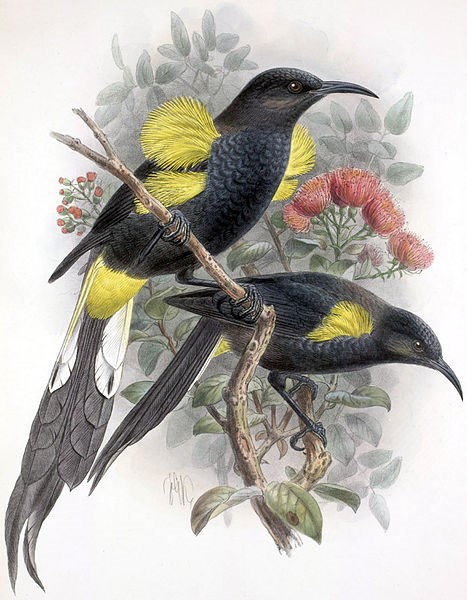Birdfinding.info ⇒ The last documented occurrence of Hawaii O’o was the collection of a specimen near Ka’au Crater on May 13, 1902. The species was regarded as common throughout the 1800s, then declined precipitously around the turn of the century. The biologist H. W. Henshaw reported in 1902 that over 1,000 individuals had been collected for their feathers in the forests near Hilo during 1898, but that it had become difficult to find by the time when he wrote—which ultimately proved prophetic. Several other native Hawaiian species declined similarly at the same time, which leaves disease (likely avian malaria) as the only plausible explanation for their mass disappearance.
Hawaii O’o †
Moho nobilis
Extinct. Formerly endemic to the Big Island of Hawaii.
Inhabited forests from sea level up to the alpine tree-line, but most commonly in the elevational range of 700 to 1,200 m.
Identification
A large, cuckoo-like honeyeater that was black overall with a yellow vent and long yellow tufts on the sides.
The two outermost tail feathers were short and white, visible mainly from below.
The male had elongated central tail feathers with thin curved tips.
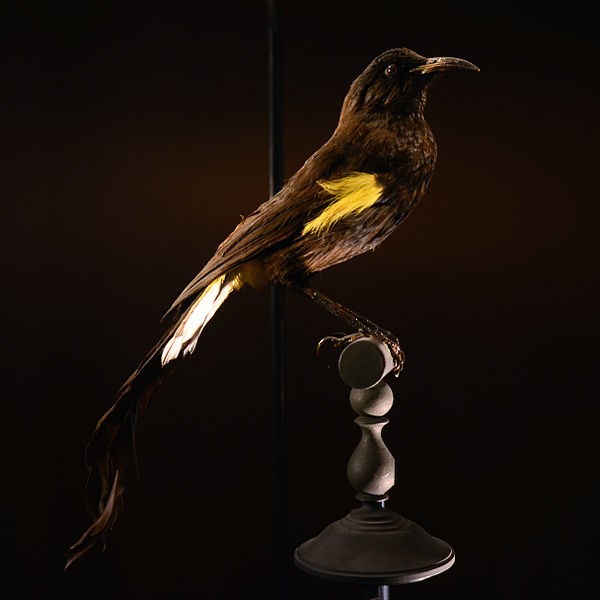
Hawaii O’o, male. (Museum National d’Histoire Naturelle, Paris, France) © Vassil

Hawaii O’o, male and female. John Gerrard Keulemans, 1900
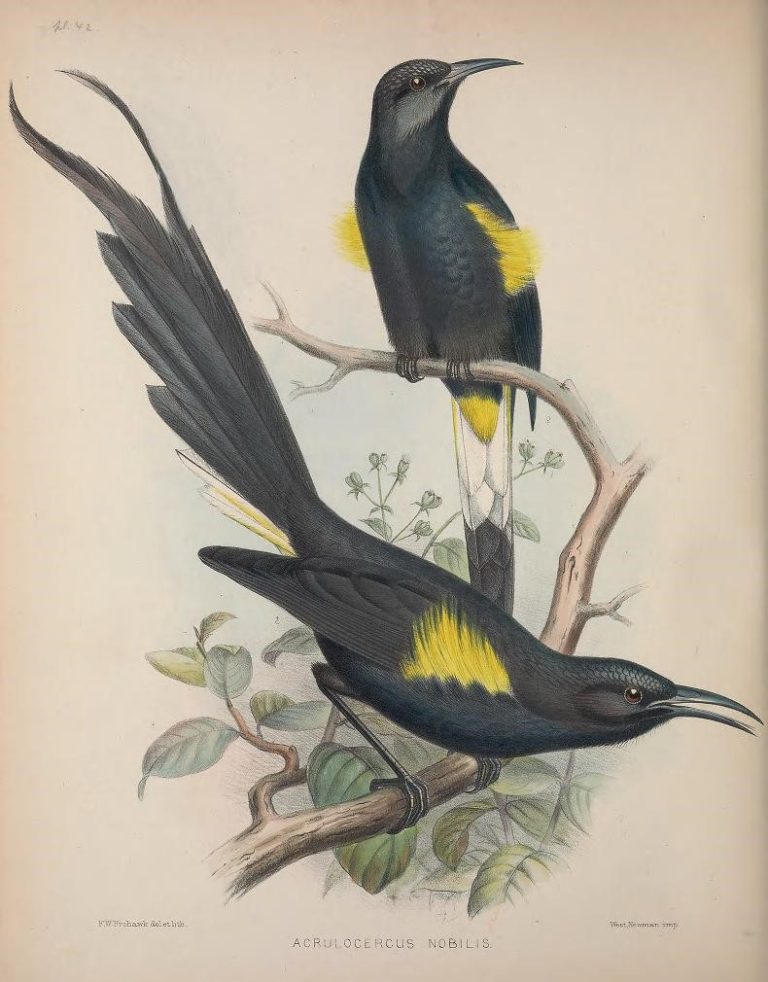
Hawaii O’o, male and female. Frederick Frohawk, 1899

Hawaii O’o, dorsal view. (National Museums Liverpool.) © Andrew Esposito
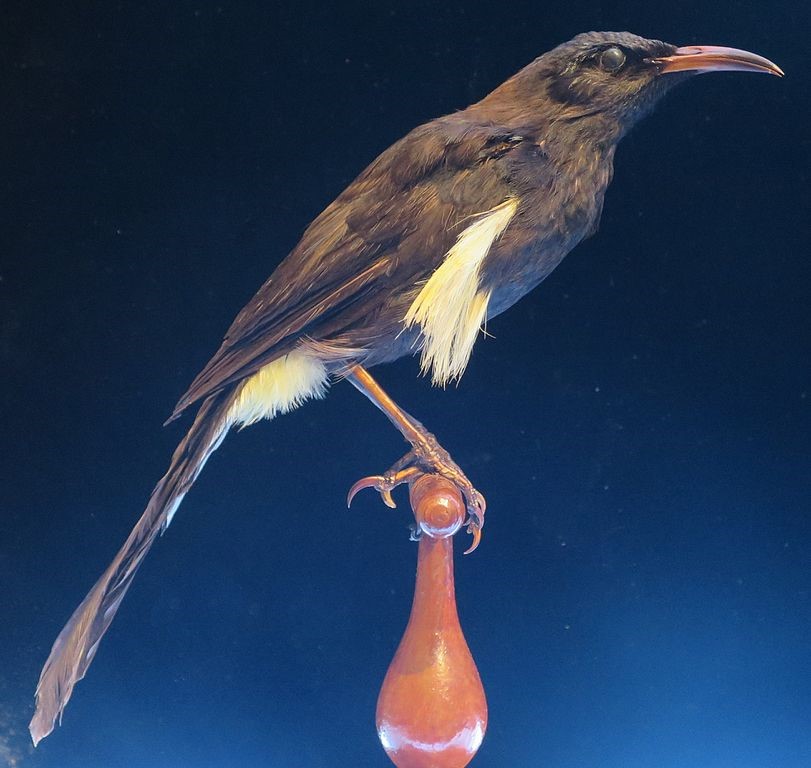
Hawaii O’o. © Bernice Pauahi Bishop Museum
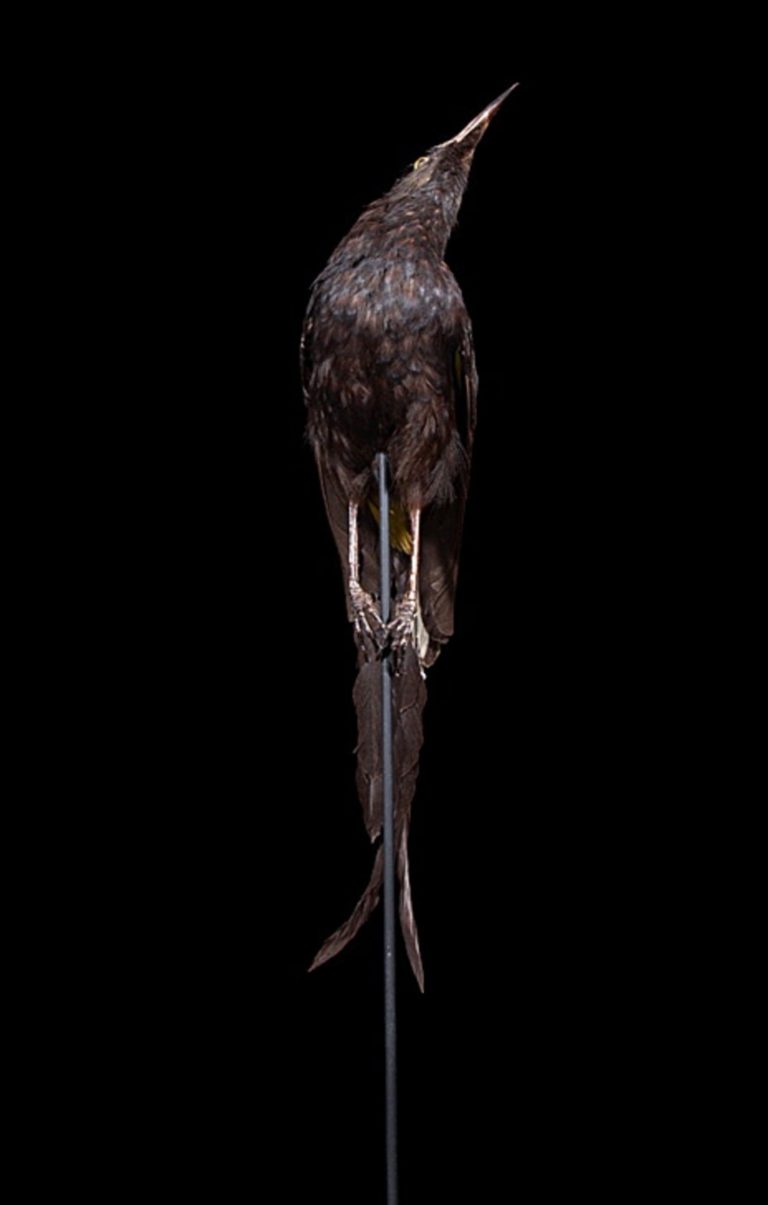
Hawaii O’o, ventral view. (Specimen ID: RMNH.AVES.110044; Big Island, Hawaii.) © Naturalis Biodiversity Center
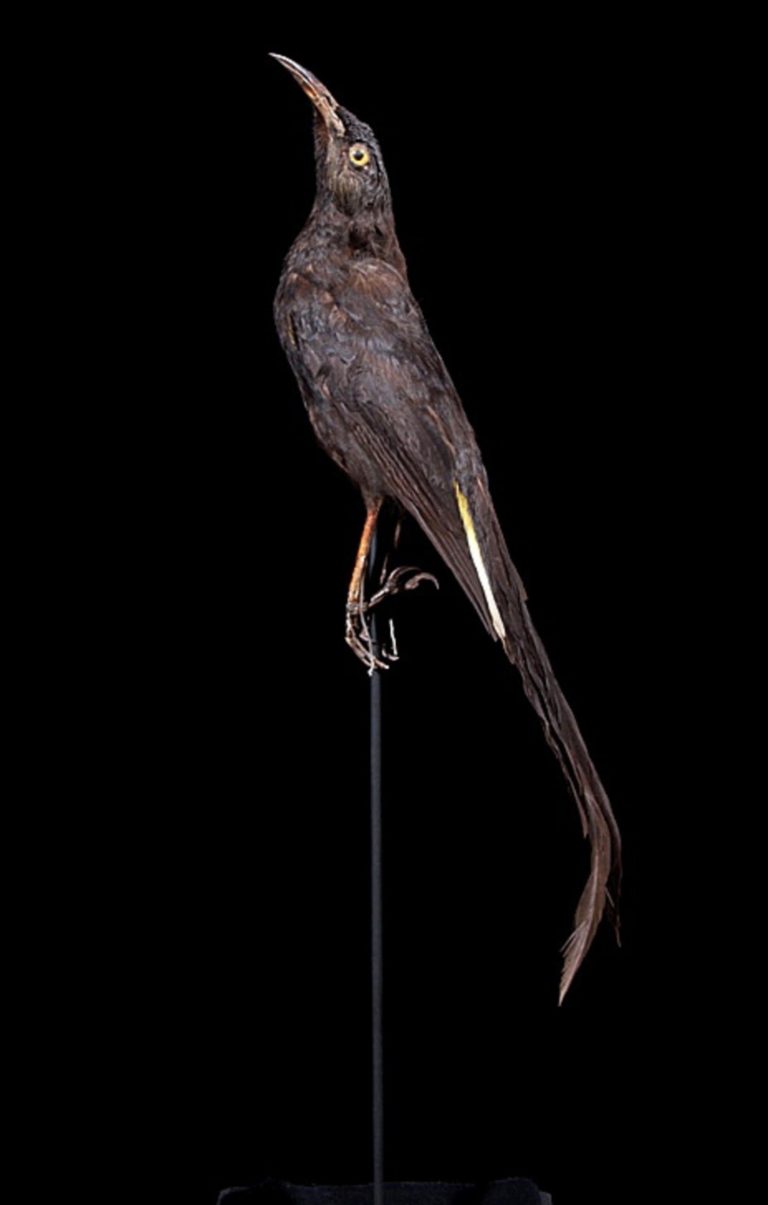
Hawaii O’o, side view. (Specimen ID: RMNH.AVES.110044; Big Island, Hawaii.) © Naturalis Biodiversity Center
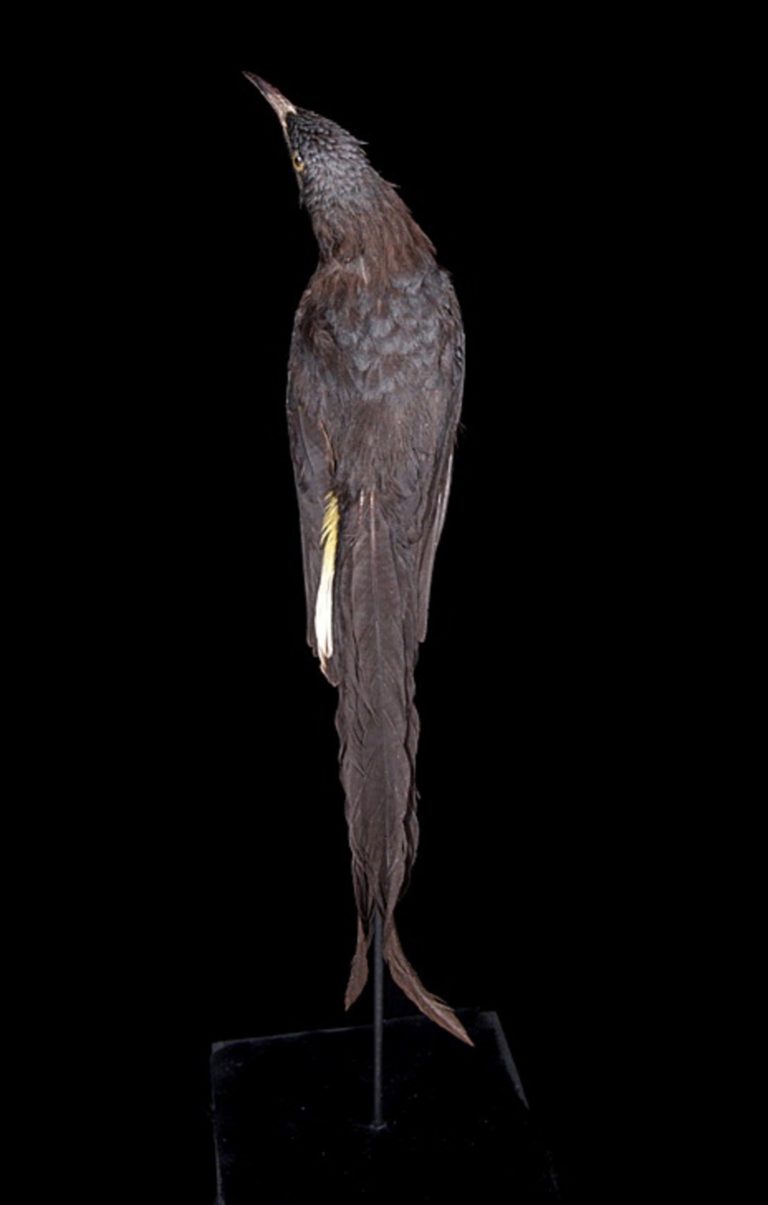
Hawaii O’o, dorsal view. (Specimen ID: RMNH.AVES.110044; Big Island, Hawaii.) © Naturalis Biodiversity Center
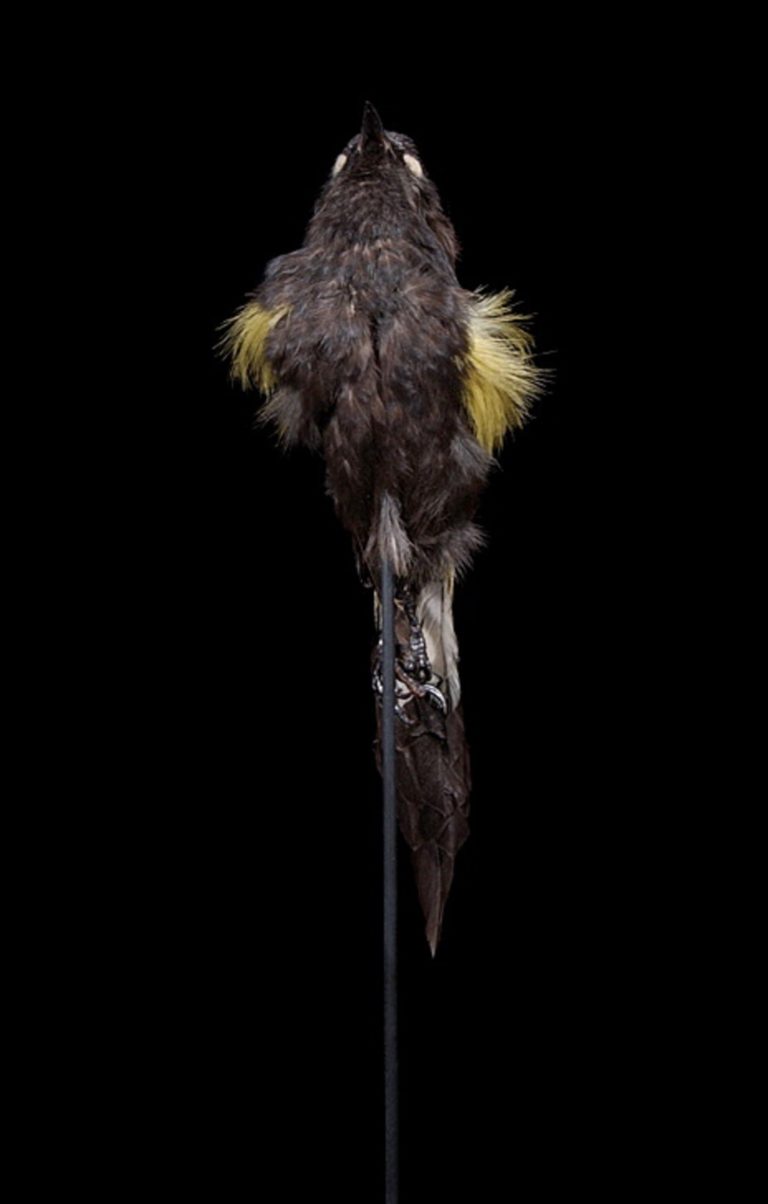
Hawaii O’o, ventral view. (Specimen ID: RMNH.AVES.110045; Big Island, Hawaii; November 1892.) © Naturalis Biodiversity Center
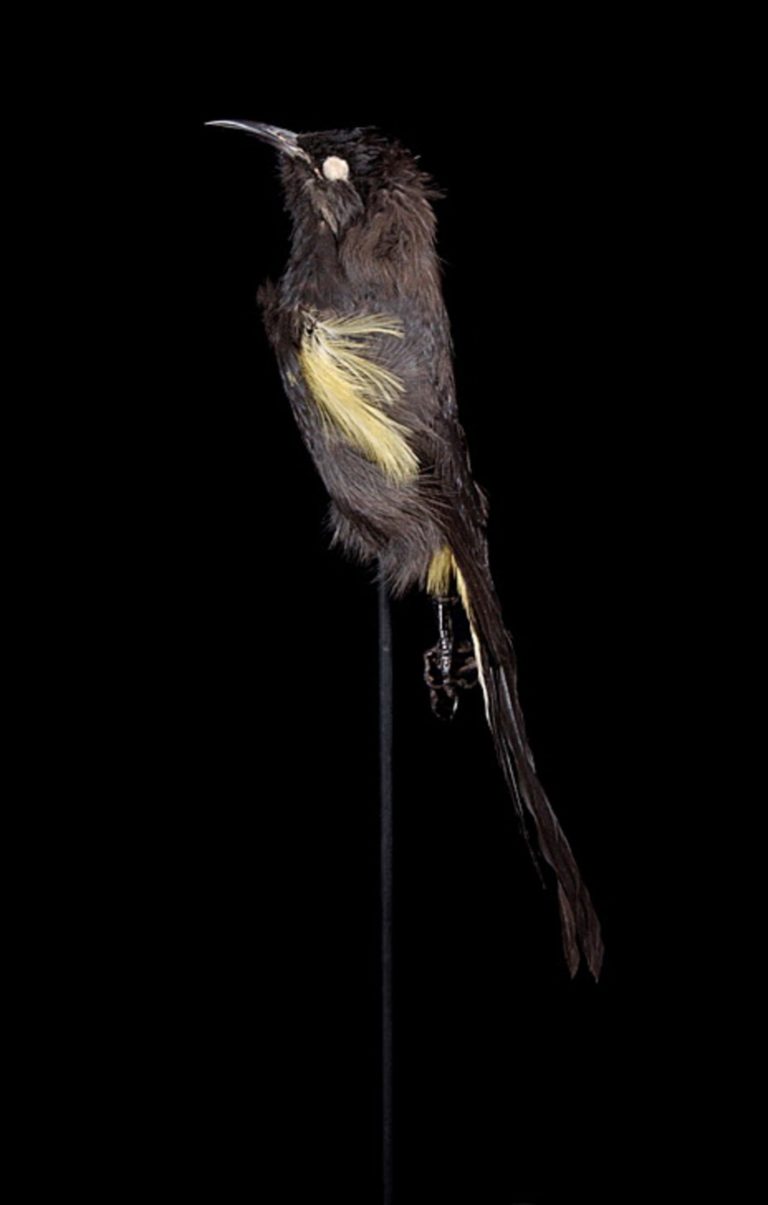
Hawaii O’o, side view. (Specimen ID: RMNH.AVES.110045; Big Island, Hawaii; November 1892.) © Naturalis Biodiversity Center

Hawaii O’o, dorsal view. (Specimen ID: RMNH.AVES.110045; Big Island, Hawaii; November 1892.) © Naturalis Biodiversity Center
Notes
Monotypic species.
IUCN Red List Status: Extinct.
References
BirdLife International. 2016. Moho nobilis. The IUCN Red List of Threatened Species 2016: e.T22704342A93964244. https://dx.doi.org/10.2305/IUCN.UK.2016-3.RLTS.T22704342A93964244.en. (Accessed June 12, 2020.)
Hume, J.P. 2017. Extinct Birds (Second Edition). Bloomsbury Publishing PLC, London.
Pratt, H.D., P.L. Bruner, and D.G. Berrett. 1987. A Field Guide to the Birds of Hawaii and the Tropical Pacific. Princeton University Press.
Pyle, R.L., and P. Pyle. 2017. The Birds of the Hawaiian Islands: Occurrence, History, Distribution, and Status. Version 2 (January 1, 2017). http://hbs.bishopmuseum.org/birds/rlp-monograph/. B.P. Bishop Museum, Honolulu, Hawaii.
